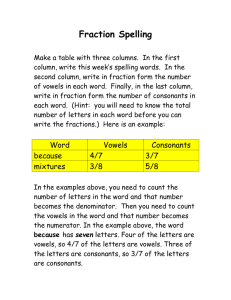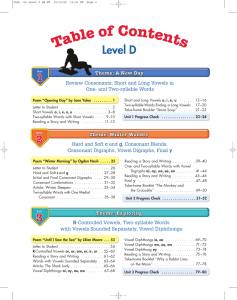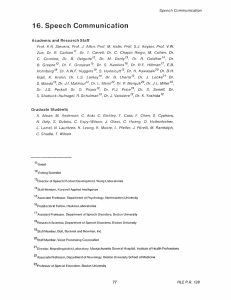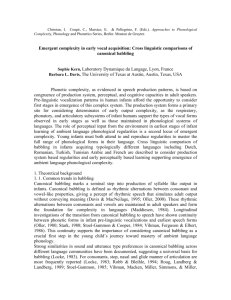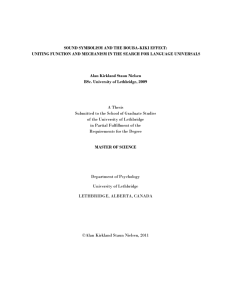C1_Assessment - Sourcebook Companion Website
advertisement
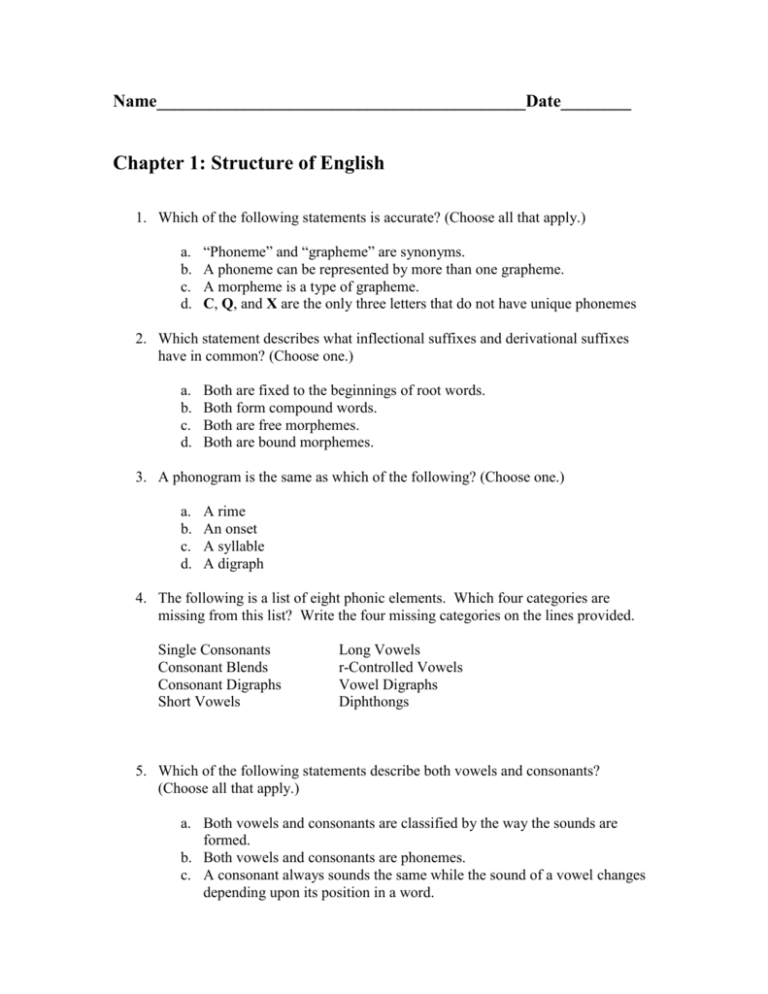
Name__________________________________________Date________ Chapter 1: Structure of English 1. Which of the following statements is accurate? (Choose all that apply.) a. b. c. d. “Phoneme” and “grapheme” are synonyms. A phoneme can be represented by more than one grapheme. A morpheme is a type of grapheme. C, Q, and X are the only three letters that do not have unique phonemes 2. Which statement describes what inflectional suffixes and derivational suffixes have in common? (Choose one.) a. b. c. d. Both are fixed to the beginnings of root words. Both form compound words. Both are free morphemes. Both are bound morphemes. 3. A phonogram is the same as which of the following? (Choose one.) a. b. c. d. A rime An onset A syllable A digraph 4. The following is a list of eight phonic elements. Which four categories are missing from this list? Write the four missing categories on the lines provided. Single Consonants Consonant Blends Consonant Digraphs Short Vowels Long Vowels r-Controlled Vowels Vowel Digraphs Diphthongs 5. Which of the following statements describe both vowels and consonants? (Choose all that apply.) a. Both vowels and consonants are classified by the way the sounds are formed. b. Both vowels and consonants are phonemes. c. A consonant always sounds the same while the sound of a vowel changes depending upon its position in a word. d. A syllable contains only one vowel sound, but it can contain more than one consonant sound. 6. Which of the following sets includes more high frequency sound/spellings? a. /f/ as in ph; /k/ as in k; /a/ as in a; /aw/ as in au b. /p/ as in p; /b/ as in b; /o/ as in o; /a/ as in a 7. The morphemes –s, un-, re-, and –ing are all examples of the following. (Choose one.) a. Affixes b. Derivational suffixes c. Free morphemes d. Roots 8. The words audible, hydraulic, and geology come from the Latin and Greek roots aud, hydr, and geo. List three additional words that come from the same three roots, or list three words that come from other Greek and Latin roots. Explain how each word relates in meaning to its root. 9. In Chapter 1 you learned: “…nearly 500 primary-grade words can be derived from only 37 ‘rhyming’ phonograms.” Explain how this happens. 10. English is widely considered a difficult language to learn for non-native speakers. Choose one aspect of English language structure described in this chapter and explain how it contributes to the difficulty of the language.





